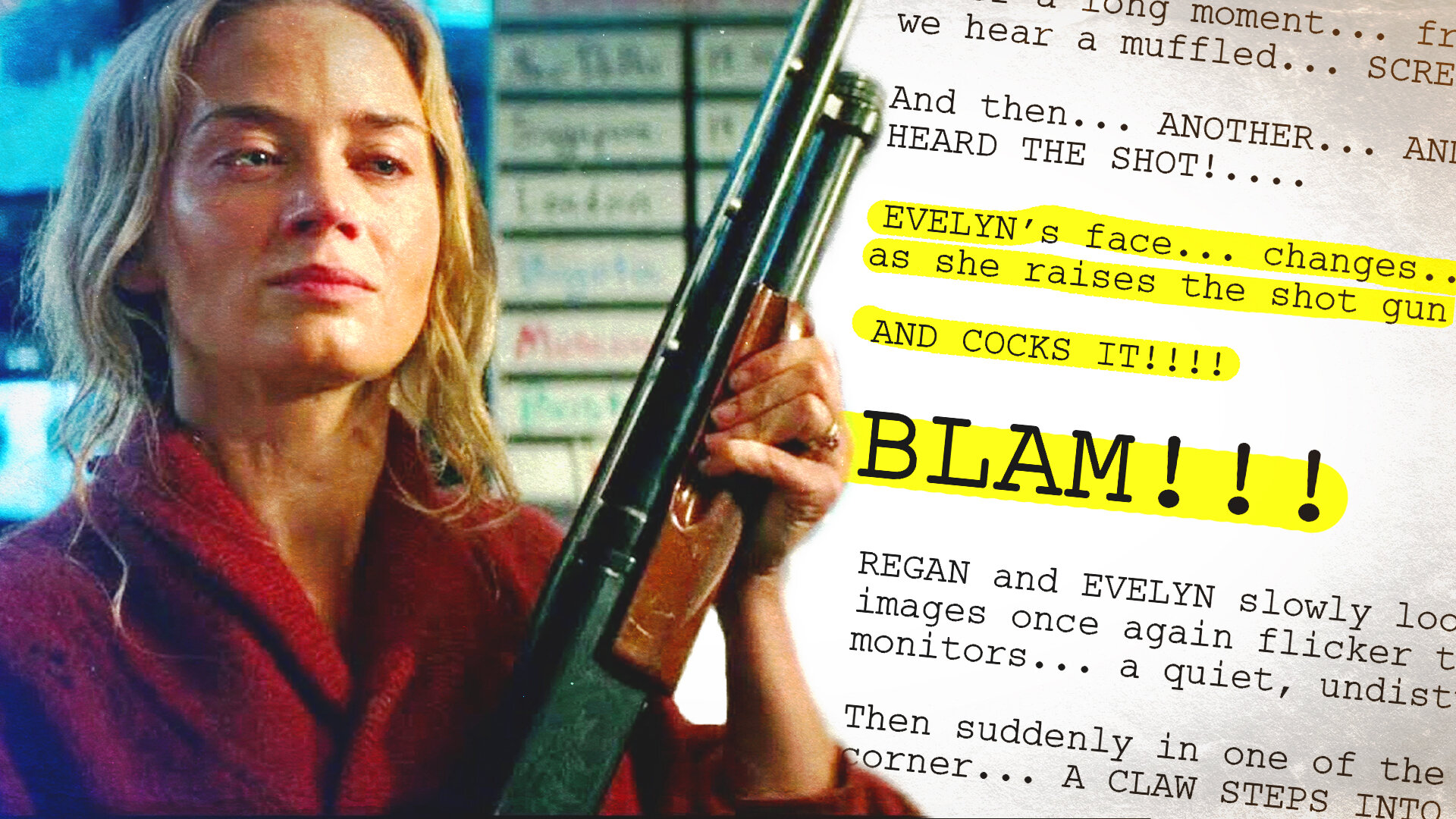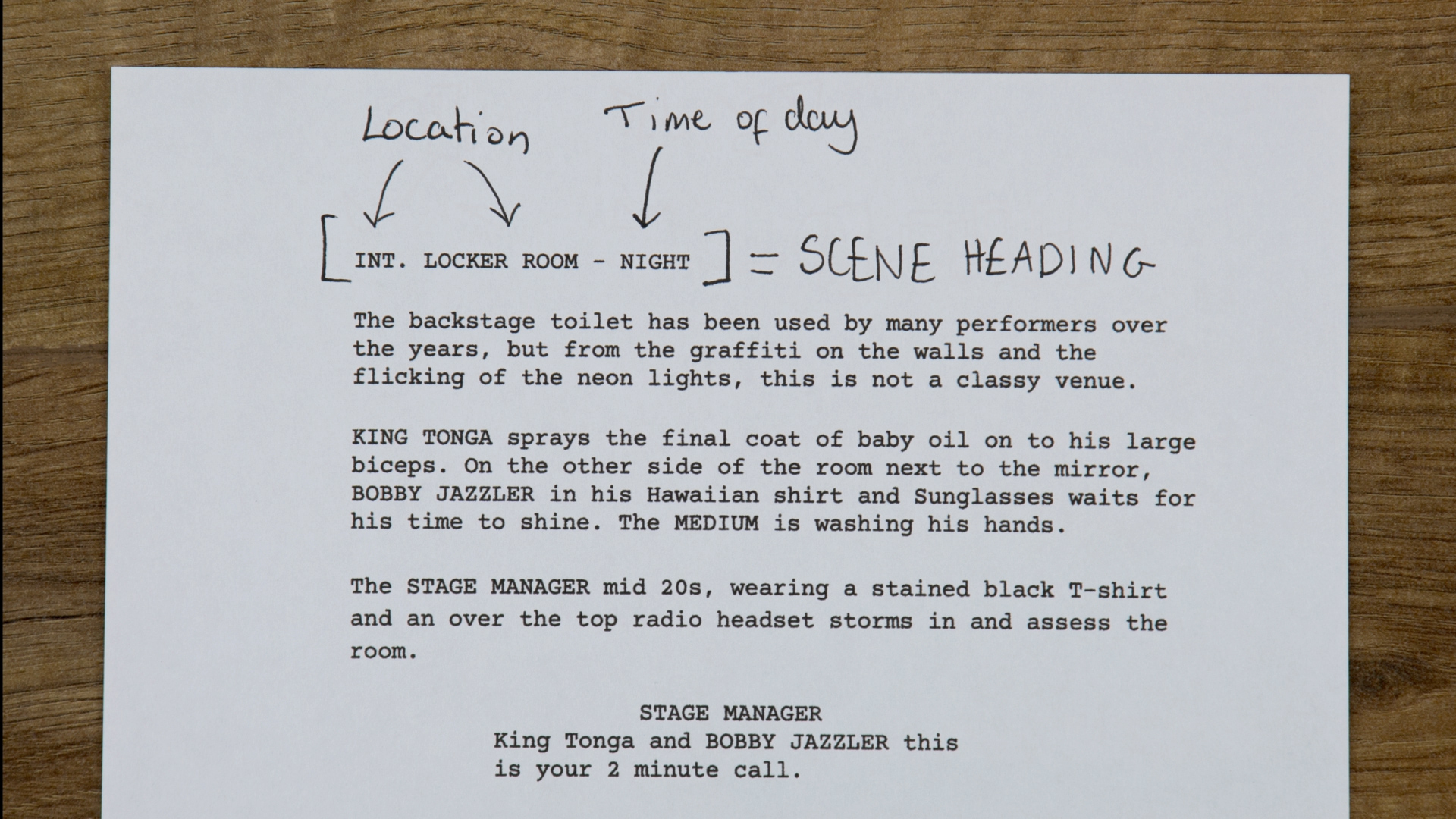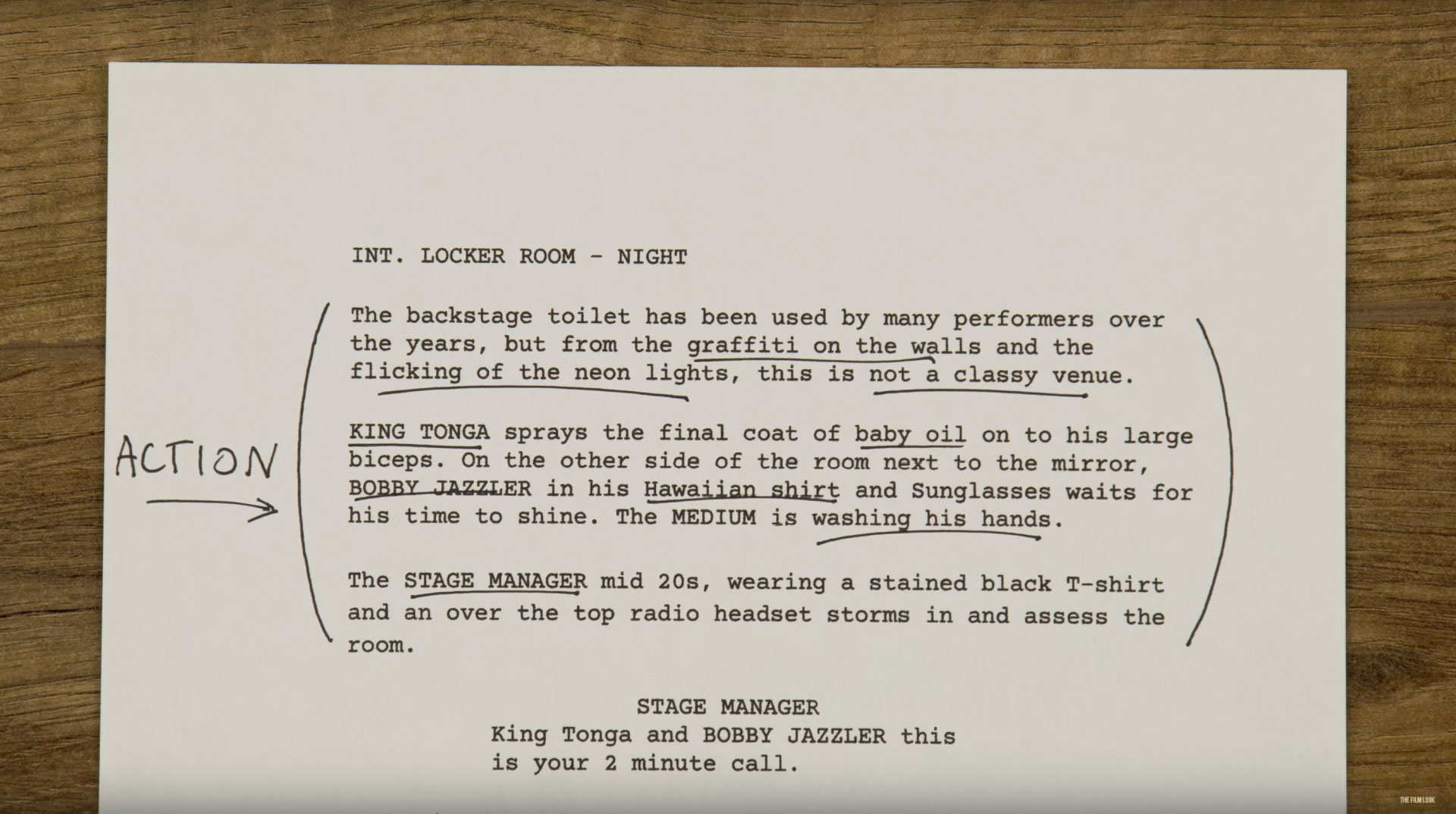A screenplay is not only the plot of the film written on paper - it is the blueprint which the whole production team and the actors will follow, breakdown, research, and prepare when making the movie. Because of this, everything you see in the script, you must be able to shoot.
For example: “Gary is nervous before his interview with Derek.” Nervousness is an emotion Gary is feeling internally. We can’t simply shoot “nervousness” because nothing is actually being outputted.
Imagine you are on a film shoot and you read the line “Gary is nervous before his interview with Derek”. You then have to ask yourself “How do I show Gary is nervous?”. You have to find a way to then SHOW that Gary is nervous.
Instead, try this: “Gary nervously taps on his knee.”. This is clearly an ACTION which suggests Gary is nervous. We can physically shoot Gary’s nervousness from the tapping on his knee because it is a clear indication of nervous body language.
To go one step further with this rule: How much emphasis do you put on this emotion? How important is Gary’s nervousness in this scene?
If his nervous feeling before meeting Derek is a critical plot or character development moment then you might want to scale up the nervous action to something bigger than tapping on his knee.
The stronger you express this emotion in the script, the more the audience will pay attention to it. If his nervousness is is crucial to Gary’s character, you may want to go with Number 5. If it isn’t as important, maybe lessen the impact. Or if it isn’t important at all, don’t even write it.
This video was Sponsored By
🚀 http://bit.ly/corruption-pack - With glitchy overlays, distorted logo reveals and more, RocketStock’s "Corruption" is an ideal way to give your project a dramatic edge.
🎵 http://bit.ly/pb-happyfunkyday - Click here to download this episode's track. Check out Premiumbeat.com to discover a huge range of exclusive royalty free music!
DISCLAIMERS:
Some of these links are affiliate links, if you purchase gear via these links The Film Look will receive a small commission, but there will be no additional cost to you. Thank you!











